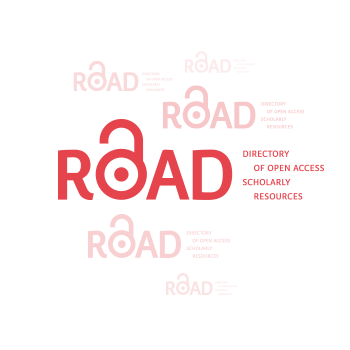Metodologías Activas en la Enseñanza de Matemáticas: Comparación en-tre Aprendizaje Basado en Problemas y Aprendizaje Basado en Proyectos
Resumen
El presente artículo examina y compara dos metodologías activas ampliamente utilizadas en la instrucción de las matemáticas: Aprendizaje Basado en Problemas (ABP) y Aprendizaje Basado en Proyectos (ABPyP). Ambos enfoques han demostrado ser efectivos para fomentar el pensamiento analítico, la solución de problemas y la cooperación entre los estudiantes. Sin embargo, existen diferencias clave en su implementación y en los resultados educativos que generan. El estudio se llevó a cabo en un entorno de educación secundaria, donde se implementaron ambas metodologías en grupos de estudiantes diferentes. A lo largo del curso académico, se recopilaron datos cualitativos y cuantitativos a través de encuestas, entrevistas y evaluaciones de rendimiento para analizar el impacto de cada metodología en el aprendizaje de los estudiantes. Las encuestas y entrevistas proporcionaron una visión detallada de las percepciones de los estudiantes y maestros sobre la efectividad y los desafíos de cada metodología, mientras que las evaluaciones de rendimiento ofrecieron datos objetivos sobre el progreso académico de los estudiantes. Los resultados indican que, aunque ambos enfoques mejoran significativamente la comprensión y aplicación de conceptos matemáticos, el ABP tiende a ser más efectivo para el desarrollo de habilidades de resolución de problemas a corto plazo. Los estudiantes que participaron en ABP mostraron una mayor capacidad para abordar y resolver problemas específicos de manera rápida y eficiente. Por otro lado, el ABPyP fomenta una comprensión más profunda y duradera de los conceptos matemáticos y fortalece la habilidad de los estudiantes para aplicar estos conocimientos en diversas situaciones la habilidad de los estudiantes para aplicar estos conocimientos en situaciones del mundo real. Los estudiantes involucrados en ABPyP desarrollaron proyectos integrales que requirieron la aplicación de múltiples conceptos matemáticos, lo que facilitó una mayor retención y transferencia de conocimientos. El artículo concluye que la elección entre ABP y ABPyP debería basarse en los objetivos específicos de aprendizaje y las necesidades de los estudiantes. Para aquellos que necesitan mejorar rápidamente sus habilidades de resolución de problemas, el ABP puede ser la mejor opción. En contraste, para una comprensión más holística y aplicada de las matemáticas, el ABPyP es más adecuado. Además, se recomienda una combinación de ambas metodologías para maximizar los beneficios educativos y preparar mejor a los estudiantes para los desafíos académicos y profesionales futuros. La combinación de ABP y ABPyP puede ofrecer un equilibrio ideal, proporcionando tanto habilidades prácticas de resolución de problemas como una comprensión profunda y contextualizada de los conceptos matemáticos. Esta investigación ofrece una comprensión más profunda de las fortalezas. y debilidades de estas metodologías activas, proporcionando una guía útil para educadores y administradores que buscan mejorar la enseñanza de las matemáticas a través de enfoques pedagógicos innovadores.
Descargas
Citas
Bell, S. (2010). Project-Based Learning for the 21st Century: Skills for the Future. *The Clearing House: A Journal of Educational Strategies. Issues and Ideas*, 83(2), 39–43.
Belland, B. R. (2017). Instructional scaffolding in STEM education: Strategies and efficacy evi-dence.
Blumenfeld, P. C., Soloway, E., Marx, R. W., Krajcik, J. S., Guzdial, M., & Pal-Incsar, A. (1991). Motivating project-based learning: Sustaining the doing, sup-porting the learning. *Educational Psychologist*, 26(3–4), 369–398.
Boaler, J. (2002). Experiencing School Mathematics: Traditional and Reform Approaches to Teaching and Their Impact on Student Learning.
Boaler, J. (2016). Mathematical Mindsets: Unleashing Students’ Potential through Creative Math, Inspiring Messages and Innovative Teaching. Jossey-Bass.
Braun, V., & Clarke, V. (2006). Using thematic analysis in psychology. Qual. Res. Psychol., 3(2), 77–101.
Condliffe, B. (2017). Project-Based Learning: A Literature Review. Working Pa-per.
Creswell, J. W., & Creswell, J. D. (2018). *Research Design: Qualitative, Quanti-tative, and Mixed Methods Approaches. Sage publications.
Devellis, R. F. (2016). *Scale Development: Theory and Applications. SAGE Publications.
Dewey, J. (1938). Experience and education. The Macmillan company.
Dochy, F., Segers, M., Van Den Bossche, P., & Gijbels, D. (2003). Effects of prob-lem-based learning: A meta-analysis. *Learning and Instruction*, 13, 533–568.
Dolmans, D. H. J. M., De Grave, W., Wolfhagen, I. H. A. P., & van der Vleuten, C. P. M. (2005). Problem-based learning: future challenges for educational practice and research. Med. Educ., 39(7), 732–741.
Etikan, I., Musa, S. A., & Alkassim, R. S. (2016). Comparison of Convenience Sampling and Purposive Sampling. *American Journal of Theoretical and Ap-Plied Statistics*, 5(1), 1–4.
Field, A. (2013). *Discovering Statistics Using IBM SPSS Statistics. SAGE Publications.
Freeman, S., Eddy, S. L., McDonough, M., Smith, M. K., Okoroafor, N., Jordt, H., & Wen-deroth, M. P. (2014). Active learning increases student performance in science, engineer-ing, and mathematics. Proc. Natl. Acad. Sci. U. S. A., 111(23), 8410–8415.
Grootenboer, P., & Marshman, M. (2016). Mathematics, affect and learning: Middle school students’ beliefs and attitudes about mathematics education. Springer Singapore.
Harmer, N., & Stokes, A. (2016). The Benefits and Challenges of Project-Based Learning: A Review of the Literature. The Plymouth Student Scientist, 9(1), 109–120.
Hattie, J. (2009). Visible Learning: A Synthesis of Over 800 Meta-Analyses Re-lating to Achievement.
Hmelo-Silver, C. E. (2004). Problem-based learning: What and how do students learn? Educ. Psychol. Rev., 16(3), 235–266.
Hmelo-Silver, C. E., & Barrows, H. S. (2006). Goals and strategies of a problem-based learning facilitator. Interdiscip. J. Probl.-Based Learn., 1(1).
Hung, M.-L., & Tsai, C.-W. (2020). Problem-based learning in teacher education: Edited by Margot Filipenko and Jo-Anne Naslund, Switzerland, Springer International Publishing, 2016, 241 pp., $139 (hardcover), ISBN 978-3-319-02002-0. High. Educ. Res. Dev., 39(5), 1070–1072.
Hung, W., Bailey, J. H., & Jonassen, D. H. (2003). Exploring the tensions of prob-lem-based learning: Insights from research. *New Directions for Teaching and Learning*, 13–23.
Hung W. Jonassen D. H. & Liu R. (2008). Problem-based learning. *Handbook of research on educational communications and technology. In Springer.com.
Jonassen, D. (2011). Supporting problem solving in PBL. Interdiscip. J. Probl.-Based Learn., 5(2).
Kemp, N., Grieve, R., & Mathews, J. (2018). Online teaching: tools and tech-niques to achieve high student engagement and interaction. *Journal of Universi-Ty Teaching & Learning Practice*, 15(1).
Kilpatrick, W. H. (1918). The Project Method: The Use of the Purposeful Act in the Educative Process. Teachers College Record, 19(4), 319–335.
Krajcik, J., Schneider, B., Miller, E. A., Chen, I.-C., Bradford, L., Baker, Q., Bartz, K., Miller, C., Li, T., Codere, S., & Peek-Brown, D. (2023). Assessing the effect of project-Based Learning on science learning in elementary schools. Am. Educ. Res. J., 60(1), 70–102.
Kvale, S., & Brinkmann, S. (2015). *InterViews: Learning the Craft of Qualitative Research Interviewing. SAGE Publications.
Larmer, J., Mergendoller, J. R., & Boss, S. (2015). Setting the Standard for Project Based Learn-ing. ASCD.
Parker, W. C., Mosborg, S., Bransford, J., Vye, N., Wilkerson, M., & Abbott, R. (2011). Re-thinking Advanced High School Coursework: Tackling the Depth/Breadth Tension in the AP ``US Government and Politics’’ Course.
Patton, M. Q. (2015). *Qualitative Research & Evaluation Methods. SAGE Publications.
Prince, M. (2004). Does active learning work? A review of the research. *Journal of Engineer-ing Education*, 93(3), 223–231.
Savery, J. R. (2006). Overview of problem-based learning: Definitions and dis-tinctions. *Interdisciplinary Journal of Problem-Based Learning*, 1(1), 9–20.
Schmidt, H. G., Rotgans, J. I., & Yew, E. H. J. (2011). The process of problem-based learning: what works and why: What works and why in problem-based learning. Med. Educ., 45(8), 792–806.
Strobel, J., & van Barneveld, A. (2009). When is PBL more effective? A meta-synthesis of me-ta-analyses comparing PBL to conventional classrooms. Interdiscip. J. Probl.-Based Learn., 3(1).
Thomas, J. W. (2000). A Review of Research on Project-Based Learning. Auto-desk Founda-tion.
Trilling, B., & Fadel, C. (2009). 21st Century Skills: Learning for Life in Our Times. Jossey-Bass.
Vygotsky, L. S. (1978). Mind in Society: The Development of Higher Psychologi-cal Processes. Harvard University Press.
Walker, A., & Leary, H. (2009). A problem-based learning meta-analysis: Differ-ences across problem types, implementation types, disciplines, and assessment levels. *Interdisciplinary Journal of Problem-Based Learning*, 3(1), 6–28.
Yin, R. K. (2017). *Case Study Research and Applications: Design and Methods. SAGE Publi-cations.
Derechos de autor 2024 Saul Rogelio Jimenez Bajaña, Maria Fernanda Crespo Peñafiel, Jorge Giovanni Villamarín Barragán, María De Lourdes Barragán Averos, Mercy Beatriz Barragan Averos, Esther Amelia Escobar Vite, Augusto Paolo Bernal Párraga

Esta obra está bajo licencia internacional Creative Commons Reconocimiento 4.0.












.png)




















.png)
1.png)


